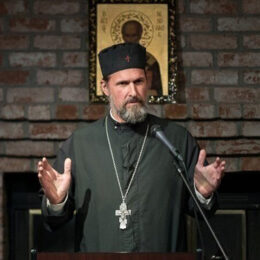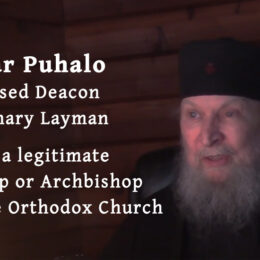OrthodoxyToday.org | Bishop Hilarion Alfeyev | Mar. 14, 2008
The recent debate on euthanasia is impossible to examine apart from the main problems in the dialogue between the religious world-view and Western secular humanism over the values which should lie at the foundation of the ‘new world order.’ In our opinion, these arguments demonstrate the anti-human essence of atheistic humanism, which lays claims to being a universal ideology and openly opposes itself to the traditional notions of life and death.
In the debate on euthanasia humanists systematically insist on the ‘right to die’ for the terminally ill. The most radical humanists go even further and maintain that the right to die should belong to all people, including the healthy, and that everybody who desires to part with life may do so either by committing suicide or by asking doctors for help in this. In many Western countries there are societies which propagate euthanasia and suicide. In France there is the ‘Association for the Right to Die with Dignity,’ in Japan the ‘Society for Death with Dignity.’ In America the ‘Hemlock Society,’ whose motto is ‘good life, good death,’ has been active for almost 25 years and counts approximately 25 thousand members. Its founder, Derek Humphry, is the author of the Final Exit, a kind of suicide manual. The book contains many tips on how to end one’s life by oneself or help others to do so, includes tables with indications of lethal doses of various substances, discusses the positive features of potassium cyanide and suggests methods for those who wish to suffocate — from plastic bags to exhaust fumes. Humphry confirmed his ideas in practice by helping his wife, his brother and his father-in-law commit suicide: his wife and her father took sleeping pills according to Humphry’s dosage, while his brother was helped to die when Humphry broke his life-sustaining apparatus.
Modern protagonists of euthanasia reject any connection between their ideas and the events that took place in Nazi Germany. But it was there that the first theory of euthanasia was developed, and it was there that this theory was first put into practice. In 1936 Helmut Unger published the story of a doctor who helped his wife, who suffered from advanced sclerosis, to die. A film based on this story was shot, which generated widespread public sympathy for the idea of a ‘merciful death.’ Soon thereafter the father of an incurably ill child asked Hitler to allow doctors to take his child’s life. Hitler handed this case over to his personal doctor, Karl Brandt, who fulfilled the request. In 1939 Hitler entrusted Reichsleiter Bouhler and Dr Brandt with the task of giving permission to doctors for the ‘granting of a merciful death to patients who, according to human estimation, are incurably ill.’ Soon in Germany appeared the first ‘Hungerhaus’ (‘house of hunger’) — such was the name given to medical institutions where babies with incurable diseases and elderly were starved to death. From 1939 until 1941 euthanasia became a routine phenomenon: the terminally ill, cripples and the mentally retarded were systematically murdered in gas chambers by the orders of doctors. During these years around 70,000 people were killed by the ‘euthanasia program,’ while by the end of World War II the total number of the programme’s victims, according to the Nürnberg Tribunal, comprised 275,000. […]
Today representatives of traditional Churches, including the Catholic and Orthodox, oppose the legalization of euthanasia. The cardinal difference in views on euthanasia and suicide between the Christian tradition and secular liberal humanism is based on the difference in fundamental notions of life and death. In liberal humanism both questions are viewed first and foremost in the context of human rights: everybody is the master of his own life, and therefore if somebody is tired of life he has the right to end it. In the Christian tradition, however, God is recognized as the master of life and death. Therefore the Orthodox Church considers suicide a severe sin and equates euthanasia with suicide or murder (The Bases of the Social Conception of the Russian Orthodox Church XII, 8). The Orthodox Church ‘cannot recognize the current widespread attempts in society to legalize so-called euthanasia, i.e. the intentional killing of the hopelessly ill (including cases in which they are put to death according to their wishes), as morally acceptable.
. . . more



